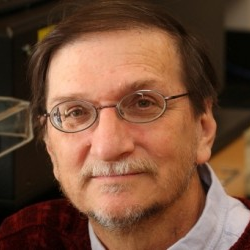Urbanization and Environmental Contaminants
A special issue of Nitrogen (ISSN 2504-3129).
Deadline for manuscript submissions: closed (15 May 2021) | Viewed by 4231
Special Issue Editors
Interests: fossil materials; ocean cycling of nitrogen; abiotic synthesis; stable isotope analysis; denitrification; nitrification; nitrogen pollution; oceanic dead zones
Special Issues, Collections and Topics in MDPI journals
Special Issue Information
Dear Colleagues,
Human populations are increasingly concentrated in urban areas, and by 2050, 70% of the world's population will live in cities (UN-Habitat). As the urban population grows, increases in impervious surfaces, combined-flow sewers, and non-point source contaminants put water resources at risk. These include changes in the discharge of potential carcinogens, elevated organic/inorganic nutrients, and weathering products from roads and buildings. Urban surface waters present unique challenges to mitigation efforts. Both rivers and small urban lakes are likely to suffer similar non-point source contamination. Faced with these challenges, municipalities have increasingly become interested in reclaiming waterways by introducing "green" technologies or adaptations aimed at improving water quality. Identifying the sources, effects, and solutions to the complex issues facing urban surface waters requires a cadre of scientists, managers, and community activists to conceive and implement solutions.
In this Special Issue, we welcome submissions focusing on both the changing water quality and biogeochemistry of urban surface waters, as well as efforts to reduce adverse impacts on these systems.
We would encourage submissions from presenters at AGU (December 2020) as well others with related research.
Prof. Stephen Macko
Prof. Stephen MacAvoy
Guest Editors
Manuscript Submission Information
Manuscripts should be submitted online at www.mdpi.com by registering and logging in to this website. Once you are registered, click here to go to the submission form. Manuscripts can be submitted until the deadline. All submissions that pass pre-check are peer-reviewed. Accepted papers will be published continuously in the journal (as soon as accepted) and will be listed together on the special issue website. Research articles, review articles as well as short communications are invited. For planned papers, a title and short abstract (about 100 words) can be sent to the Editorial Office for announcement on this website.
Submitted manuscripts should not have been published previously, nor be under consideration for publication elsewhere (except conference proceedings papers). All manuscripts are thoroughly refereed through a single-blind peer-review process. A guide for authors and other relevant information for submission of manuscripts is available on the Instructions for Authors page. Nitrogen is an international peer-reviewed open access quarterly journal published by MDPI.
Please visit the Instructions for Authors page before submitting a manuscript. The Article Processing Charge (APC) for publication in this open access journal is 1000 CHF (Swiss Francs). Submitted papers should be well formatted and use good English. Authors may use MDPI's English editing service prior to publication or during author revisions.






